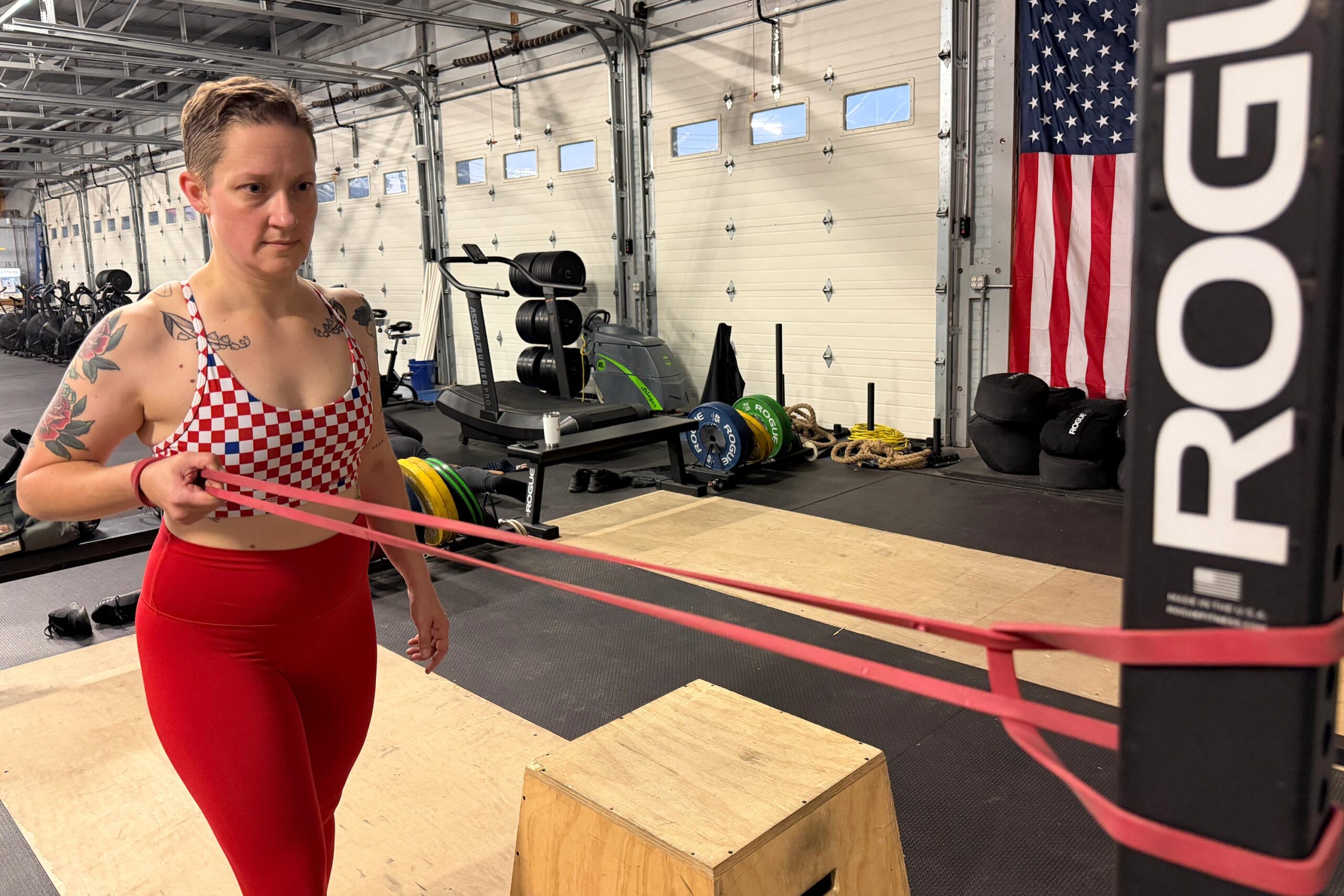Health
Physical Therapist Offers Four Solutions for Tech Neck Relief

The increasing use of personal devices such as smartphones and laptops has led to a common issue known as “tech neck.” This condition, characterized by forward head posture and neck pain, results from the habitual tilting of the head forward, placing strain on the neck and upper back. According to Patrick Suarez, a physical therapist based in Albany, New York, many individuals unknowingly exacerbate this problem through their daily habits.
Suarez explains that instinct often leads people to stretch their necks for relief. Unfortunately, this approach can further aggravate the situation. He notes, “When you stoop cranially to text a friend or order an Uber, what’s actually happening is you’re overstretching the muscles in the back of your neck that connect to your shoulder blades and upper back.” Instead of stretching, he advocates for strengthening exercises to restore balance and promote proper alignment.
Understanding Tech Neck Beyond Smartphones
Tech neck is not exclusively linked to smartphone use. Regular activities like driving can also contribute to poor posture. Suarez recommends adjusting seating positions to promote better alignment. “When you’re in the car, get your butt all the way back in the seat, shoulders back, back of your head on the headrest and then move your mirrors to that position,” he advises. This method encourages drivers to adopt a more upright posture, counteracting the hunching that often occurs during long drives.
Suarez emphasizes that maintaining optimal posture throughout the day is a gradual process. “It’s unrealistic for me to ask you, who might have poor posture, to stand up tall for the entire day,” he says. Instead, he suggests incorporating small, manageable adjustments and exercises into daily routines.
Four Key Exercises to Strengthen Neck Muscles
To combat the effects of tech neck, Suarez has identified four specific exercises aimed at strengthening the upper back and neck muscles. These exercises help ensure proper head alignment, which can alleviate discomfort and prevent long-term issues.
1. **Wall Angels**
This exercise promotes better posture and shoulder mobility. Stand with your back against a wall, ensuring your low back, shoulders, and the back of your head are in contact. Keep your core engaged and arms at a 90-degree angle, then slowly slide your arms overhead while maintaining contact with the wall. Return to the starting position.
2. **Thoracic Spine Wall Rotation**
This mobility exercise targets the upper back. Assume a half-kneeling position beside a wall, placing your right thigh against it. With fingertips behind your ears, rotate your torso to the left, attempting to touch both elbows to the wall. Reverse the motion to the right, ensuring equal movement on both sides.
3. **Row Variations**
These exercises enhance shoulder blade positioning and strengthen upper back muscles. For a single-arm row, anchor an exercise band at chest height. Stand facing the anchor point and pull the band towards your chest, squeezing your shoulder blades together. Perform an equal number of repetitions on both sides. A high-to-low row can be performed similarly, but with the band anchored above head height.
4. **Prone I’s, T’s, and Y’s**
These movements focus on the muscles surrounding the shoulder blades. Lie facedown on a stability ball with arms hanging down. Raise your arms in a “Y” shape, squeezing your shoulder blades at the top. Repeat this motion for a “T” and an “I” position, ensuring controlled movements throughout.
By integrating these exercises into daily routines, individuals can effectively combat tech neck and promote better posture. As Suarez emphasizes, consistent effort and mindfulness are essential to achieving lasting improvement in neck health.
-

 Business5 days ago
Business5 days agoUK to Finalize Stablecoin Regulations by 2026, Boosting Crypto Sector
-

 Business6 days ago
Business6 days agoU.S. and U.K. Target Cybercriminal Networks, Seize $15 Billion
-

 World5 days ago
World5 days agoMilitary Artillery Plan Sparks Safety Concerns Along California Highway
-

 Lifestyle5 days ago
Lifestyle5 days agoKISS OF LIFE’s Natty Dazzles in Micro-Shorts at Seoul Event
-

 Sports5 days ago
Sports5 days agoDomenico Doran’s Stellar Performance Leads Bishop Amat to Victory
-

 World6 days ago
World6 days agoTrump Signals Reluctance to Sell Tomahawk Missiles to Ukraine
-

 Business5 days ago
Business5 days agoCalifornia to Eliminate All Plastic Bags from Stores by 2026
-

 Entertainment5 days ago
Entertainment5 days agoLouisiana Senate Raises Concerns Over Medicaid Cuts Amid New Bill
-

 Entertainment5 days ago
Entertainment5 days agoUtah Communities Rally as Government Shutdown Strains Resources
-

 Health2 days ago
Health2 days agoUncovering the Hidden Link Between Knee Pain and Hip Issues
-

 Science2 days ago
Science2 days agoAncient Dinosaur Discovery in Argentina Reveals Evolutionary Insights
-

 Sports6 days ago
Sports6 days agoTrade Low, Trade High: Key NHL Players to Consider Now









